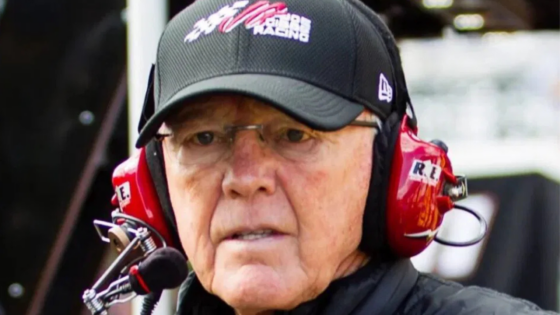Scottie Scheffler‘s single win at The Players Championship netted him $4.5 million—more than Nelly Korda earned in her entire dominant 2024 season. Even more staggering? The 10th-place finisher on the PGA money list, Sungjae Im, pocketed $6.2 million while the LPGA’s 10th-place earner, Lauren Coughlin, made just $2 million. That’s a 3x gap for players ranked identically in their respective tours.
These aren’t cherry-picked statistics—they’re the brutal reality of professional golf’s gender pay gap. And they explain why newly appointed LPGA Commissioner Craig Kessler desperately needs Jay Monahan to step up and help save women’s golf from financial disaster. Golf analyst Beth Ann Nichols didn’t mince words when discussing this crisis on Golf Channel. She made it clear that the PGA Tour needs to do way more than it currently does. Her message was simple but powerful: collaboration isn’t optional anymore—it’s survival.
Craig Kessler needs Jay Monahan’s support for LPGA survival
The conversation started when Golf Channel’s host pointed out the obvious elephant in the room. “It’s no secret that the LPGA tour doesn’t have a lot of resources, is very close to running on fumes in golf terms,” he noted. Then came the million-dollar question: “Does Craig Kessler need to coax or nudge or bully the other organizations in golf, chiefly the PGA Tour, into sharing some kind of resources?”
Nichols didn’t hesitate with her response. “Well, I think it wouldn’t hurt. I definitely think the PGA Tour could do more in that way and should do more in that way,” she declared. The PGA Tour could increase co-sanctioned events and offer better player services like improved travel arrangements and locker room facilities that are standard for men but often lacking for women.
The golf analyst emphasized that Kessler brings unique advantages to this challenge. “I think the fact that he already has existing relationships with so many people who are movers and shakers in the golf industry should hopefully go a long way into making things happen,” she explained. Kessler served as COO at both the PGA of America and Topgolf, giving him direct access to golf’s most influential executives and decision-makers.
Nichols also acknowledged that groundwork already exists for deeper collaboration. “It seems like these are obvious bridges that Mike Whan started. Obviously we’re seeing the fruits of that in the major championships,” she observed. Whan launched the KPMG Women’s PGA Championship as a joint venture with the PGA of America and created the Grant Thornton Invitational featuring PGA Tour and LPGA stars.
However, Nichols believes the current efforts barely scratch the surface. “It’s felt for several years now like you know well, what else can be done surely there’s more here,” she added. Despite the PGA Tour-LPGA alliance formed in 2016, there remains a lack of full-field mixed events and consistent co-marketing between the tours.
LPGA vs PGA Tour: The staggering financial divide
The numbers tell a devastating story about professional golf’s gender inequality. The PGA Tour’s 2025 season features over $400 million in total prize money. Meanwhile, the LPGA’s $131 million purse, which even Lydia Ko finds insufficient, represents just one-third of that amount.
These differences extend far beyond prize money alone. While ESPN+ pays the PGA Tour over $700 million annually for streaming rights, the LPGA’s expanded agreement covers just eight events with undisclosed terms. The disparity becomes even starker when examining operational budgets.
PGA events typically feature $15+ million operational budgets for grandstands and hospitality areas. Meanwhile, LPGA tournaments usually spend less than $2 million, relying heavily on volunteer staff. Corporate sponsorship patterns reflect similar imbalances. RBC invests $20 million annually in PGA events compared to just $2.6 million for the LPGA’s Canadian Open.
The player earnings sustainability issue most clearly highlights these disparities. Ninety percent of PGA Tour members earn over $500,000 annually. Conversely, approximately 30 percent of LPGA players lose money yearly due to travel costs and limited financial support. Even more troubling, the LPGA projects a $2 million operating loss for 2024 despite record-breaking performances from stars like Nelly Korda.
Recent crises underscore the urgency of Monahan’s potential involvement. The LPGA canceled the $2 million Fir Hills Seri Pak Championship after its underwriter failed to meet payment obligations. Additionally, South Korean broadcaster JTBC defaulted on payments for both 2024 and 2025, creating massive revenue holes.
Women’s sports represent significant growth opportunities, but unlocking that potential requires immediate action from golf’s most influential decision-makers. Kessler’s appointment offers hope for transformation. However, his success will largely depend on securing meaningful support from established tours. The question remains whether leaders like Monahan will answer the call for greater collaboration that could benefit the entire golf ecosystem.
The post New LPGA Chief Instructed to Ask Jay Monahan for Help as Lack of ‘Resources’ Hurts Female Pros appeared first on EssentiallySports.



